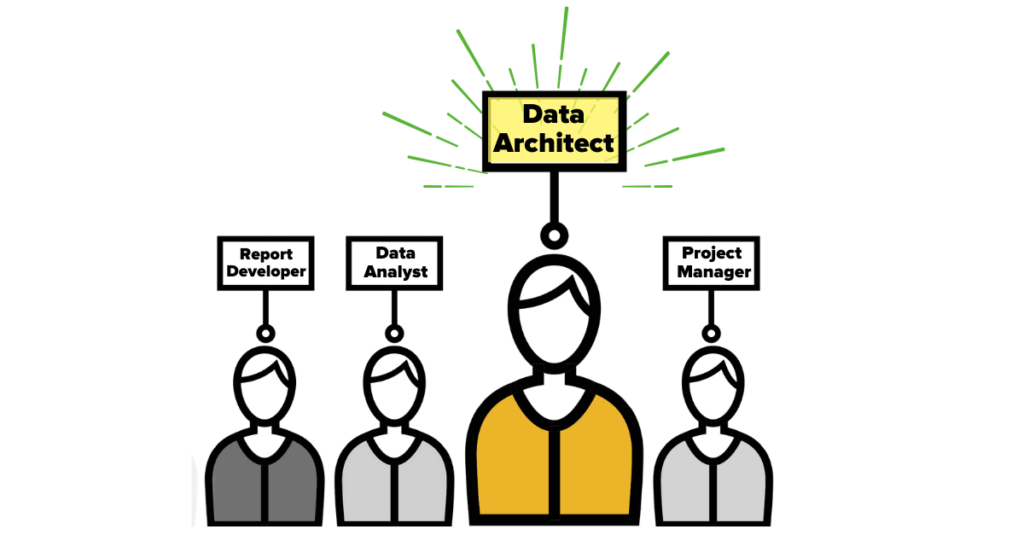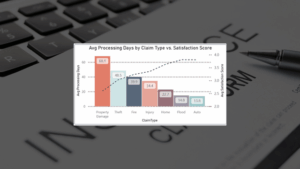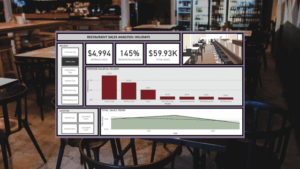Today, businesses across all industries rely on data to drive decisions and optimize operations—but effectively collecting, managing, and making sense of all that data is a challenge if you don’t have the right architecture in place to support it. That’s where data architects come in.
Data architects store, organize, and secure key business intelligence data to make it accessible, reliable, and actionable. But finding the right data architect who has the technical know-how and business acumen to design robust architecture that aligns with overarching business goals is a challenge—especially for small- and mid-sized businesses with limited resources.
What does a data architect do? What role do they play in the data management process? And what should you watch out for when hiring one?
Let’s take a closer look at what you should know before hiring a data architect, including key responsibilities, interview questions, and red flags to avoid.
What Does a Data Architect Do?
A data architect is like the blueprint developer of your business’s data systems.
They design a data architecture based on your unique business requirements—and then build, manage, and maintain this architecture to make data organized, accessible, and usable across your business. In other words, they create the foundation that keeps data flowing smoothly and securely from source to insight.
Importantly, a data architect ensures that key stakeholders across your business have constant, on-demand access to the relevant, high-quality data they need, when they need it. This way, teams from IT to operations to leadership can make strategic, informed decisions and solve problems more efficiently.
A data architect’s specific responsibilities will vary depending on the business, but here’s a look at some of their main responsibilities:
1. Data Modeling
To build a strong data architecture that enables teams to access, understand, and use data effectively, data architects must start with data modeling.
Data modeling is the process of defining how data will be organized, structured, and stored across systems in a way that supports both business and technical requirements.
This is how data architects lead data modeling:
- Meet with key stakeholders to determine high-level business goals and understand how data can support them.
- Translate business goals into conceptual models, i.e., a non-technical view of your data architecture: what data is needed; where it comes from; how it connects.
- Develop logical models that map out specific data sources, relationships, attributes, and keys, including ERPs, CRMs, and other third-party applications your business uses.
- Create physical models, a more granular implementation plan that outlines exactly how data will be stored in your systems, including everything from data types and indexing to naming conventions and database structure.
For data warehousing and business intelligence needs, a data architect may also create a dimensional model, which is specifically designed to enable easier reporting and analytics.
2. Infrastructure Design and Implementation
Once the data models are in place, the data architect’s next step is to design and implement infrastructure to bring those models to life.
To do so, the data architect reverts back to your business’s goals, budget, and technical needs to determine which technologies (e.g., cloud, on premises, or hybrid) make the most sense. From there, they configure the right combination of databases, data lakes, and/or data warehouses based on your business’s data storage and access needs.
Most likely, your business will use multiple data sources. To move and transform data from various sources into a centralized, consistent, and usable format, the data architect is also responsible for setting up data pipelines. Usually, this means using ETL (extract, transform, and load) processes to unify structured and unstructured data from both internal and external sources.
All the while, a good data architect will take care to clean data, reduce redundancies, and address issues like latency, scalability, and recovery planning to ensure a data architecture that’s fast, reliable, and responsive.
3. Governance, Security, and Compliance
In addition to designing infrastructure, a data architect is responsible for ensuring your data is secure, trustworthy, and compliant. This means creating data governance, security, and compliance plans—three closely related but distinct concepts:
- Governance: Defining how data should be handled to ensure accuracy, quality, and consistency across systems, e.g., implementing policies for data lineage tracking, classification, etc.
- Security: Developing and enforcing policies to protect your organization’s data from unauthorized access, misuse, breaches, or other risks. This can include writing access control policies, encryption strategies, etc.
- Compliance: Ensuring your business’s data remains compliant with industry regulations, e.g., GDPR, HIPAA, SOC 2, etc.
4. Monitoring and Refinement
A data architect’s responsibilities don’t end when systems go live. They also oversee ongoing system maintenance to proactively identify issues, continuously improve performance, and ensure data architecture keeps up with your business’s evolving needs.
For example, a data architect’s maintenance responsibilities may include:
- Monitoring load processes
- Automating repetitive workflows
- Fine-tuning system performance
- Proactively identifying and resolving bottlenecks
This kind of ongoing refinement is important for your architecture’s longevity, ensuring your systems remain reliable, scalable, and aligned with the way your teams are actually using data.
What Are the Characteristics of a Good Data Architect?
A good data architect should combine technical expertise with business know-how. This requires a keen sense of system design, as well as things like data governance, scalability planning, and operational strategy. At the same time, they must be able to communicate effectively with both technical and non-technical stakeholders.
Basically, a good data architect knows how to build a scalable data architecture that supports business growth—and they can clearly communicate how and why this architecture works in a way all stakeholders can understand.
When getting ready to hire a data architect, these are a few traits to look for:
1. Technical Expertise
Naturally, a data architect needs deep technical expertise, namely in data modeling, storage, integration, and security. They should also be fluent in relevant languages and tools essential to your business’s applications.
While it’s not reasonable to expect a data architect to be a niche expert in every tool, they should have a general understanding and working knowledge of diverse cloud infrastructure, modern integration frameworks, and other data orchestration tools. More importantly, they should be able to strategically evaluate and select the right technologies for implementation based on your business’s unique objectives.
2. Proactive Problem-Solving Skills
No matter how expertly designed, your data architecture will run into problems at one point or another. You’ll stumble on bottlenecks; new data sources will emerge; and your business’s objectives and priorities will naturally shift over time.
A good data architect is primed to proactively problem-solve and adapt.
They know how to design scalable, future-proof solutions that are ready to accommodate changing data volumes, new tools, and business growth. And when problems do arise, they can confidently troubleshoot, adjust system designs, and recommend new approaches as needed to keep projects on track and aligned with business goals.
3. Dynamic Communication
A good data architect doesn’t just build databases—they design strategic data architecture that’s purpose-built to support your business’s long-term goals.
To do so, they must be able to collaborate with diverse stakeholders from IT teams to executive leadership, gathering varied and potentially conflicting input to create a cohesive, unified architecture that is technically sound, in line with business needs, and useful across teams.
3 Main Challenges in Hiring a Data Architect
Finding a skilled data architect can be challenging—especially if you’re a small- to mid-sized business with limited resources competing for top talent.
As you begin the search for the right candidate, keep these challenges in mind:
1. High Demand, Low Supply
The demand for data-driven insights is at an all-time high—but at the same time, skilled data architects are in short supply. According to the U.S. Bureau of Labor Statistics’ Occupational Outlook Handbook, demand for data architects is set to grow 9% in the next 8 years.
Bottom line, this means there’s less data-architect talent to go around, with large enterprises (and their deep pockets) competing with small businesses for the same top talent.
2. Evolving Skill Requirements
Data moves fast. Even highly skilled, seasoned data architects have to constantly upskill to keep up with fast-moving industry changes.
According to Deloitte’s 2025 Global Human Capital Trends report, workers are spending 50% more time learning new technical skills than they did years ago. For hiring managers, this means it can be a challenge to find data architects with up-to-date expertise.
3. Retention Issues
Even if your business manages to snag a well-trained, experienced data architect, it’s hard to be sure how long they’ll stick around. According to research from Deloitte, 70% of technical workers reported having multiple job offers on the table when they accepted their most recent role.
Particularly for small- to mid-sized businesses who may not be able to offer salaries, bonuses, and other perks that match those of larger-scale enterprises, it can be hard to retain top data architect talent in a market that has much to offer.
Top 3 Interview Questions to Ask When Hiring a Data Architect
Your business relies on a data architect to design, build, and maintain data systems—so the pressure’s on to find someone who’s got both the technical savvy and the business acumen to support your goals.
How can you make sure you’re hiring the right candidate? Use these four data architect interview questions to guide you:
1. Can you give an example of your past work with data modeling?
Data modeling is the foundation of a strong data architecture, so you want to make sure you find a data architect that can provide demonstrable experience leading the full data modeling cycle—from the conceptual to the physical.
Pay attention for responses that show the candidate is capable of translating business requirements into productive data models that accurately reflect evolving needs and set the stage for future growth. You’ll also want to note the specific tools the candidate has experience with, e.g., SQL Server Data Tools, Erwin, etc.,
2. What steps would you take to ensure data security and compliance in our systems?
An experienced data architect will be able to provide a structured plan that addresses data protection, regulatory compliance, quality assurance, and other ongoing maintenance requirements.
Remember, they’re coming up with this plan on the fly, so don’t expect overly detailed responses. Still, a competent candidate should cover key areas like:
- Access controls
- Encryption standards
- Audit logging
- Regulation compliance, e.g., GDPR, HIPAA, etc.
3. Can you share an example of a challenging data integration you managed? What was the outcome?
This question prompts the candidate to show off their real-world experience. Specifically, you want them to demonstrate how they’ve handled tricky architecture problems in the past—and whether or not they were able to overcome them.
Look for clear examples of complex integrations, such as resolving schema mismatches, merging structured and unstructured data, or managing real-time ETL pipelines across systems. If the candidate is purposefully vague, this may be a sign that they don’t have enough experience to navigate real-world challenges.
The best candidates will be able to not only explain the challenge and how they solved it, but why this was important for the business and what they learned.
4. How do you design data architecture for scalability?
Of course, your business goals, data sources, and reporting requirements will evolve naturally over time—so you want to make sure you’re working with a data architect who’s prepared to pivot and re-architect quickly.
The right candidate should be able to explain how they design data architecture to handle both short-term demands and long-term growth. Specifically, press them on how they would approach database selection, indexing strategies, partitioning, and other optimization practices..
This is where good candidates will show off their mix of technical skills and business know-how. Look for a data architect who plans to monitor performance over time and adapt systems to continuously stay in step with your business’s overarching goals.
3 Red Flags When Hiring a Data Architect
As you evaluate candidates, remember that the role of a data architect is complex, and you’re not likely to find a single candidate who will be able to check every box. Plus, interviews are high-pressure situations, so it’s normal for even an experienced data architect to stumble on a question or two.
Still, this is your chance to carefully screen for candidates who are not the right fit for your business. To help, watch out for these red flags when hiring a data architect:
1. They’re Overly Attached to a Single Tool
Data architecture isn’t one size fits all. If a candidate seems overly reliant on one specific tool, platform, or methodology, then it could be a sign they’re not experienced and/or knowledgeable enough for the job.
A strong data architect should have enough experience to critically evaluate different technologies and frameworks to find the optimal fit for your business’s specific requirements and goals—without just defaulting to what they’re most comfortable with.
2. They Don’t See the Big Picture
Yes, a good data architect needs deep technical knowledge and expertise—but they also need a keen business mindset. Specifically, they must be in tune with how data architecture impacts your business’s broader objectives.
If an interviewee can’t take a step back from the technical details to explain how architecture improves efficiency, enables better decisions, and drives measurable outcomes, then they may be too focused on tools—and not enough on results.
3. They Struggle to Explain Ideas Clearly
A data architect may be a technical role, but it’s also a collaborative one. After all, in order to design a data architecture that supports your business’s long-term goals, a data architect must be able to communicate with stakeholders across departments to understand what each team needs—and why.
If a candidate struggles to clearly explain their ideas during an interview, then this could be an indicator of a larger communicative shortcoming—and trouble for your business. You need someone who can align teams, manage expectations, and communicate trade-offs without slipping into jargon and causing confusion.
How Much Is a Data Architect Paid?
A data architect’s salary can vary depending on their experience level, education, and even location. In a competitive hiring market, many companies are also prepared to sweeten the deal with bonuses, retirement contributions, performance-based incentives, and other perks.
According to ZipRecuiter, the national average salary for data architects is between $128,000 and $164,000. You can see more accurate estimates for a data architect salary on the state level.
Why Is It Hard to Find a Good Data Architect?
The demand for skilled data architects has exploded in recent years with more businesses relying on data to drive operations, strategy, and growth. But the supply of qualified talent hasn’t kept up—and companies are starting to feel the pinch when it comes to hiring data architects.
According to a new survey from ManpowerGroup, “66% of employers said they were struggling to find candidates with the right IT & data skills.” With a limited pool of trained professionals to go around, it’s hard to find (and retain) a good data architect.
This is especially challenging for small- to mid-sized businesses who have to compete for tech talent with bigger enterprises offering bigger salaries, better benefits, and add-on perks that may be out of your reach.
What Happens If You Hire the Wrong Data Architect?
When you’re up against stiff market competition, it can be hard to find the right data architect for your business. But if no candidate seems like a good fit, don’t settle.
Hiring the wrong data architect can actually create more problems than it solves—and the long-term impact can be costly.
If you work with the wrong data architect, you risk:
- Poor System Design: Faulty architecture design can lead to bottlenecks, data loss, and an all-around unstable infrastructure that’s hard to scale or maintain.
- Security and Compliance Gaps: Poorly designed data architecture can put your business at risk of data breaches or regulatory non-compliance.
- Wasted Time and Money: Undoing a data architect’s shoddy work and starting over is a waste of time and resources.
- Missed Business Goals: If your data isn’t easily accessible, reliable, or in line with your strategic priorities, then it can’t help your teams make informed decisions—and it’s effectively useless.
What’s the Difference Between a Data Architect and a Data Analyst?
Data architects and data analysts work closely together—but they each contribute different skills to your overall data strategy.
A data architect is responsible for designing, building, and maintaining systems that store, organize, and protect your business’s data. In other words, they create the foundation to make data accessible (and usable) across your organization.
A data analyst then works within this architecture to generate reports, uncover trends, and turn data into insights that can power informed decision-making across departments.
Basically, a data architect creates the system from which the data analyst extracts data to drive decision-making.
Consider Hiring a Fractional Data Team Instead of a Data Architect
Data architects play a critical role in helping your business make strategic, informed, truly data-driven decisions, but hiring a full-time data architect is simply not feasible for all businesses, especially for small- and mid-sized teams. With high demand, short supply, and evolving skill demands, there’s stiff competition to hire and retain a full-time data architect to support your business.
But hiring full-time isn’t your only option. You can turn to a fractional data team instead.
A fractional data team gives you on-demand access to the experience and technical expertise of a data architect—plus a data analyst, business analyst, and a lot more.
Together, a fractional data team can design, build, and maintain the data infrastructure that your business needs to operate efficiently, make smarter, more informed decisions, and scale sustainably. This way, you get customized, curated support for everything from architecture design and integration to reporting, governance, and optimization—without the overhead of hiring and managing multiple full-time roles.
Before you consider hiring a data architect, learn more about the benefits of working with a fractional data team and how it can help power strategic, data-driven decision-making that powers sustainable business growth.







